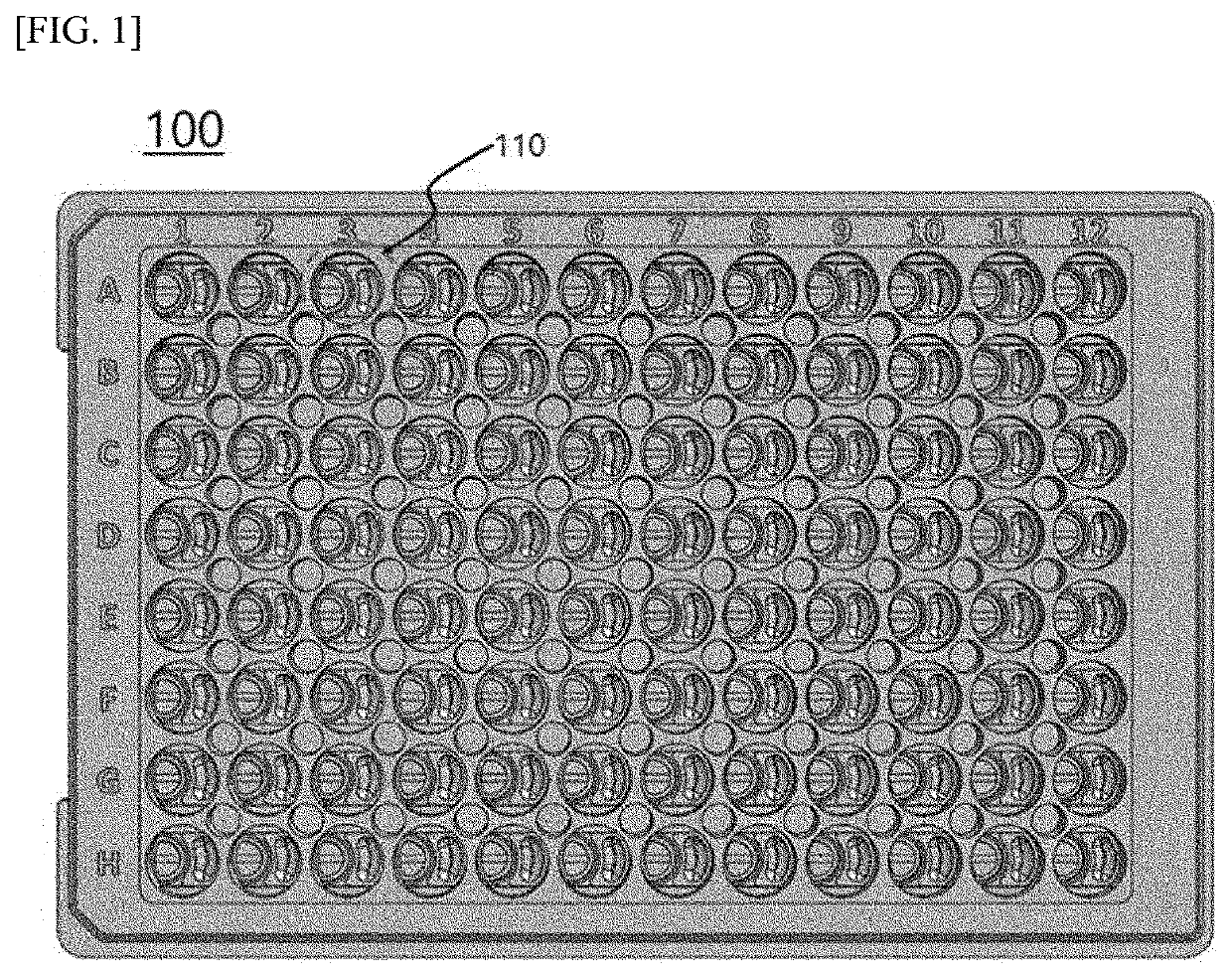Rapid cell culture test device designed such that fluid films with uniform thickness are formed
a cell culture and fluid film technology, applied in biochemistry apparatus and processes, laboratory glassware, instruments, etc., can solve the problems of inability to design the system at the same time, and achieve the effect of accurately and quickly determining the effects of a bioactive agent, the effect of rapid antibacterial susceptibility testing
- Summary
- Abstract
- Description
- Claims
- Application Information
AI Technical Summary
Benefits of technology
Problems solved by technology
Method used
Image
Examples
example 1
[0087]A thermoplastic resin (polystyrene (PS)) was injection molded into the multi-well-based cell culture test device illustrated in FIG. 1, which had an array of 12×8 aligned well units. After injection molding, the inner walls of the cell culture test device were hydrophilized.
[0088]Agarose containing microbeads was mixed with a bacterial solution (agarose: bacterial solution=50:1) to prepare a first fluid. The first fluid was dispensed into the well units. The agarose solution was evenly spread throughout the first sub-wells 120 by the microchannels 126. The agarose solution was stopped at the same height as the barrier portions B 140b of the barrier structures 140 but rose along the inner walls of the barrier portions A 104a of the barrier structures 140 to a level higher than the surroundings. When the amount of the first fluid was small overall, the width of the capillary channels 124 was made smaller than that of the microchannels 126d, which is preferable in terms of soluti...
example 2
[0093]FIG. 10 shows growth of reference strain E. coli ATCC 25922 without antibiotics, which was observed at regular time intervals using the cell culture test device of the present disclosure. The bacterial colonies increased in size with time. The colonies of the strain were visible to the naked eye from 4 h after initiation of colonization.
[0094]FIG. 11 shows a process for susceptibility testing of reference strain E. coli ATCC 25922 to imipenem as an antibiotic, which was observed at regular time intervals using the cell culture test device of the present disclosure. The antibiotic was used at concentrations of 0.12 μg / ml to 2.0 μg / ml recommended by the Clinical & Laboratory Standards Institute (CLSI). The results were recorded at 2 h intervals until 6 h after initiation of testing. The minimum inhibitory concentration (MIC) of the antibiotic, an important factor in antibiotic susceptibility testing, could be determined, as shown in FIG. 11.
[0095]FIG. 12 shows a process for susc...
PUM
| Property | Measurement | Unit |
|---|---|---|
| volume | aaaaa | aaaaa |
| volume | aaaaa | aaaaa |
| volume | aaaaa | aaaaa |
Abstract
Description
Claims
Application Information
 Login to view more
Login to view more - R&D Engineer
- R&D Manager
- IP Professional
- Industry Leading Data Capabilities
- Powerful AI technology
- Patent DNA Extraction
Browse by: Latest US Patents, China's latest patents, Technical Efficacy Thesaurus, Application Domain, Technology Topic.
© 2024 PatSnap. All rights reserved.Legal|Privacy policy|Modern Slavery Act Transparency Statement|Sitemap



